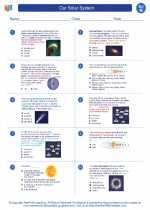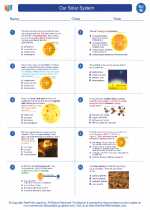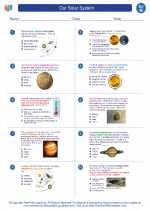Our Solar System
The solar system consists of the Sun and all the celestial objects that are gravitationally bound to it, including the eight planets and their moons, dwarf planets, asteroids, comets, and other small bodies. Here's a brief overview of the key components:
The Sun
The Sun is the star at the center of our solar system. It is a nearly perfect sphere of hot plasma, with internal convective motion that generates a magnetic field via a dynamo process. It provides the energy that sustains life on Earth.
The Planets
There are eight planets in our solar system, divided into two groups: terrestrial planets (Mercury, Venus, Earth, and Mars) and gas giants (Jupiter, Saturn, Uranus, and Neptune). Each planet has unique characteristics and features.
Moons
Many of the planets in our solar system have moons, which are natural satellites that orbit around them. For example, Earth has one moon, while Jupiter has over 70 known moons.
Dwarf Planets
In addition to the eight planets, there are also five recognized dwarf planets in our solar system, including Pluto, Eris, Haumea, Makemake, and Ceres. These objects are similar to planets in some ways but have not cleared their orbital neighborhood of other debris.
Asteroids and Comets
Asteroids are rocky objects that orbit the Sun, mostly found in the asteroid belt between Mars and Jupiter. Comets, on the other hand, are icy bodies that also orbit the Sun and develop a visible coma (fuzzy outline) or a tail when they are near the Sun.
Study Guide
To gain a deeper understanding of our solar system, consider exploring the following topics:
- The formation and evolution of the solar system
- Comparing the characteristics of the terrestrial planets and gas giants
- Exploring the moons of different planets and their unique features
- Investigating the role of the Sun in the solar system and its impact on Earth
- Studying the differences between asteroids and comets, and their potential impact on Earth
◂Science Worksheets and Study Guides Eighth Grade. Our Solar System

 Worksheet/Answer key
Worksheet/Answer key
 Worksheet/Answer key
Worksheet/Answer key
